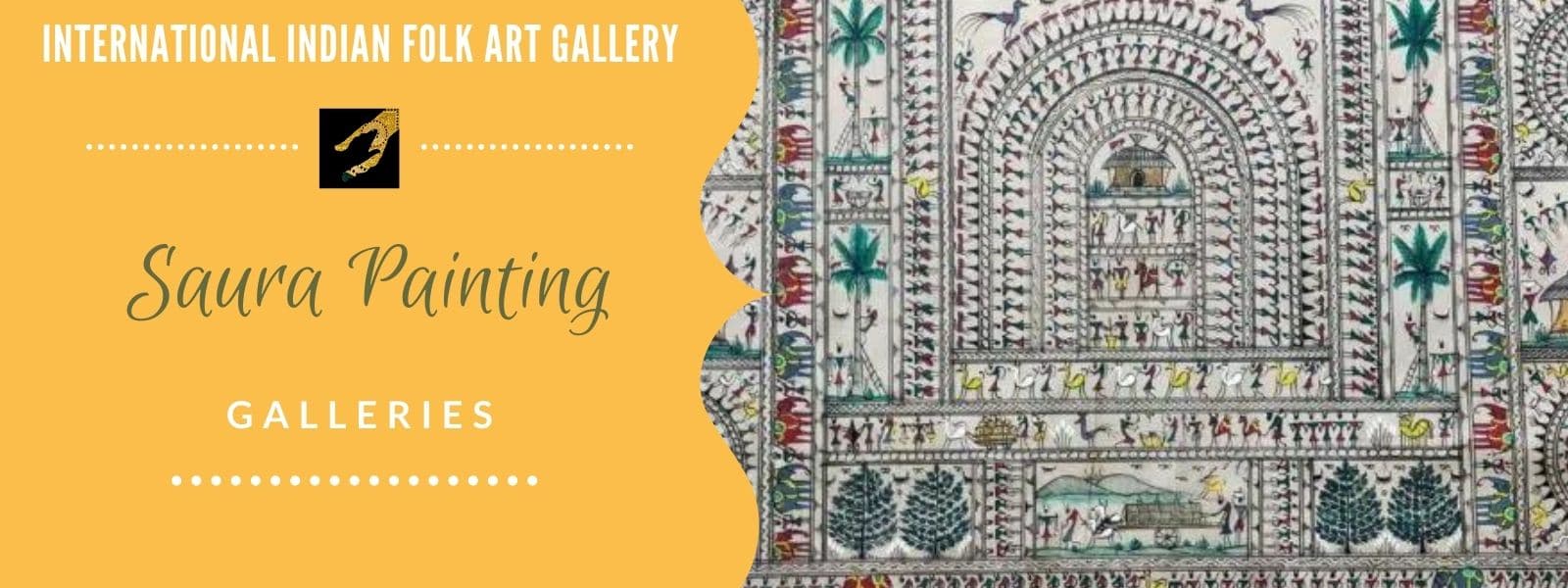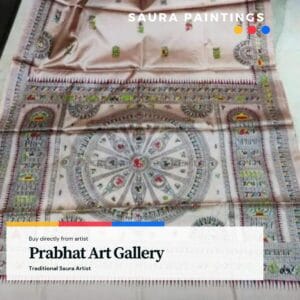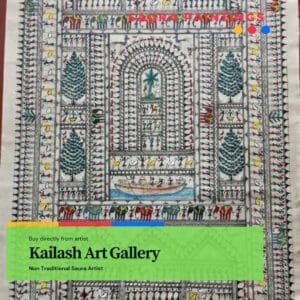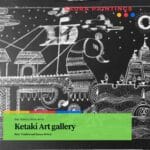Saura Painting
Saura Painting
Eastern India has some beautiful roots in folk art, represented through the Saura tribe’s wall painting tradition. Particularly evident in regions like Orissa. The Saura people’s paintings are also called ikons. These pictures were traditionally painted on their houses, but now they are well known all over India..
Saura art is a really interesting way to see how the Sauras lived and what they believe. They’re a tribe from the state of Orissa, but they’re really dynamic and colourful. With a history that has been mentioned in the Ramayana and the Mahabharata, the Sauras are known for their distinct tribal culture and their art.
Another interesting facet of the Kerinci people is their deep connection to nature. Their family art reflects this and seems to be a simplistic depiction of village life. The Saura people rely on their art and the symbolism within it to hold on to their customs and culture.
For the Saura tribe, who do not have a written language, their artwork is often used as a record of history, philosophy and other cultural beliefs.
Saura art is traditionally made on the red or brown clay walls of the homes of the villagers, with natural dyes made from rice, white stone, and flower and leaf extracts, using a brush that is made from tender bamboo.
The Sauara paintings are usually of Idital, the deity of the Sauras tribe who helps people during auspicious occasions like harvesting or child-birth.
Saura’s icons tap into a variety of recurring symbols, some of which include people, the tree of life, the sun & moon, horses & elephants. In traditional cultures it was only priests who could make icons. They would also tell their village folk about their culture and customs using an oral tradition.

As seen at a glance, Saura seems to be the identical twin of another tribal artform from India that is also better known. Made up of similar geometric shapes, in earthy colours, these two artforms are often hard to differentiate. There are subtle differences between the two however – ranging from the composition of the forms to the pattern they’re placed in.
The figures in the Saura style are less angular than the Warli style. In Warli art the human body is depicted by two sharp triangles conjoined at the apex.
The Saura forms are also larger and more elongated than the ones seen in Warli art, with no physical differentiations between male and female shapes.
Another distinct characteristic of Saura art is the ‘fishnet’ approach with which all the artworks are made. When drawing a Saura artwork, the border is drawn first and then patterns fill in the space towards the center.





